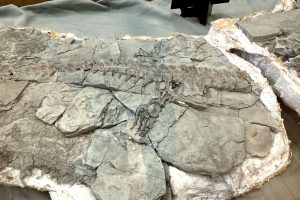This story is part 10 of the AL.com series “Ancient Alabama,” examining the natural forces that made Alabama what it is over the past 500 million years, and how those forces still shape the state today.

It’s ironic that to find the fossils of some of the largest sea creatures ever to roam ancient Alabama, you have to go to a place that looks like a desert.
The weathered chalk gullies at Harrell Station Paleontological Site in Dallas County could almost be mistaken for Saharan sand dunes, or at least a large Gulf of Mexico beach without the actual Gulf.
But these gullies are made of Mooreville chalk, like so much of the bedrock in Alabama’s Black Belt. Wind and water have carried away about 82 million years of topsoil and rock, exposing the late Cretaceous sediments underneath.
That eroding chalk is rich with fossils large and small, including shark teeth, fish vertebrae, massive ancient turtles and mosasaurs – marine reptiles that grew 50 feet or more and ruled the seas toward the end of the dinosaur age.
This part of Alabama would have been underwater at the time, as a massive shallow sea covered the interior of North America. Mosasaurs were the apex predator of those seas, feasting on fishes, sharks, turtles, perhaps even occasionally land-based dinosaurs that died and washed out to sea.
Read the full article at al.com’s website.